Burned forest
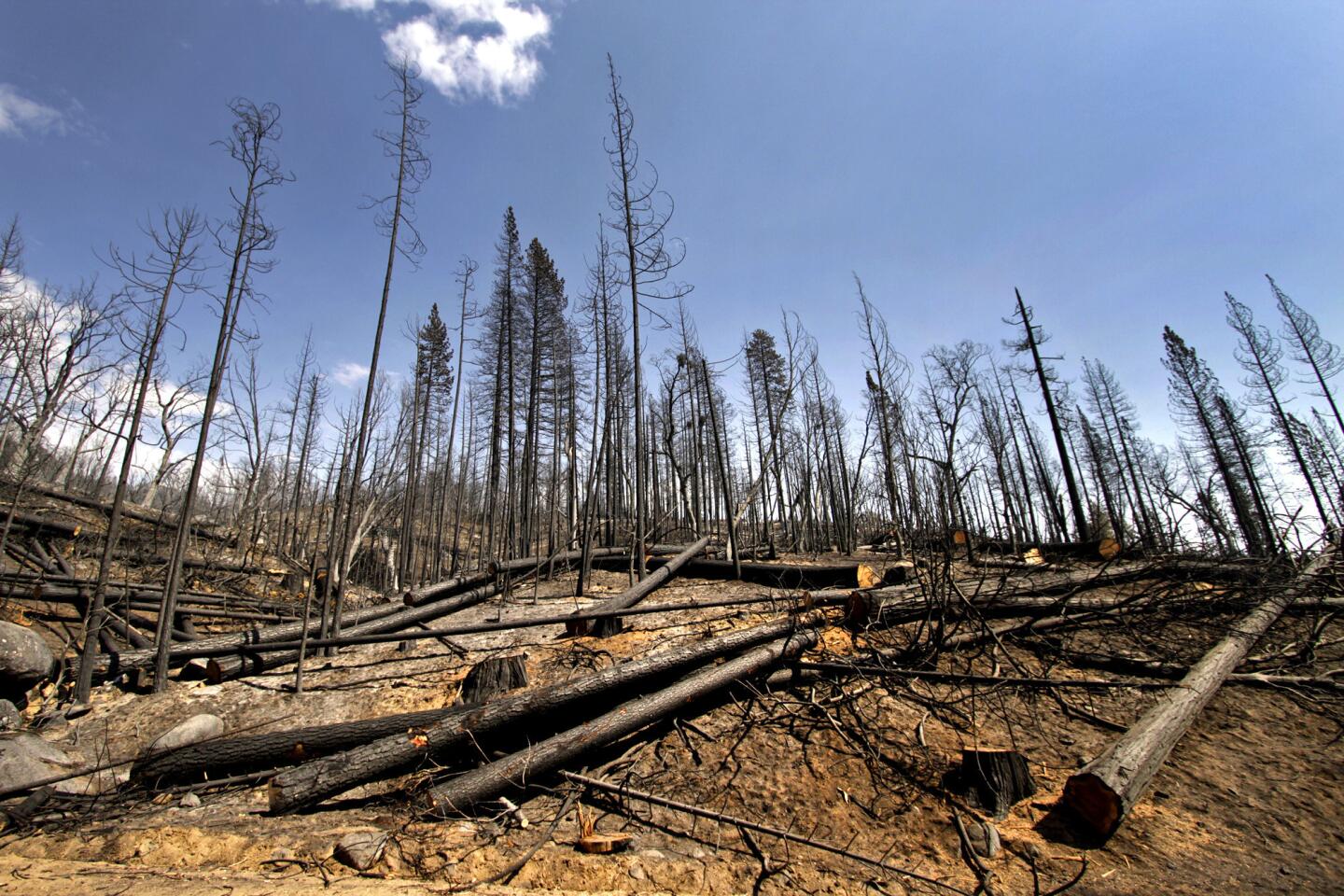
A view of the burned area near Granite Creek in the Stanislaus National Forest. (Lawrence K. Ho / Los Angeles Times)
The huge Rim fire, ignited Aug. 17 by a hunter’s illegal campfire, is likely to have transformed large swaths of the Stanislaus National Forest for decades to come.
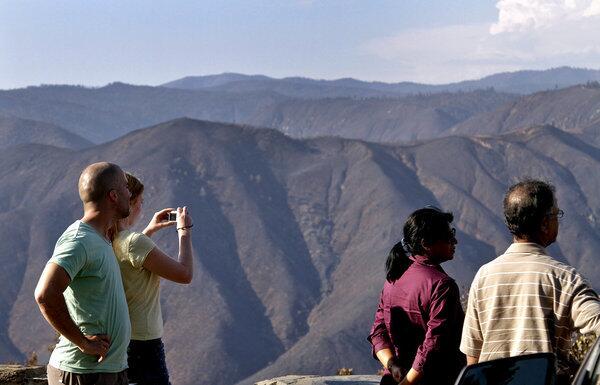
Tourists at the Rim of the World vista point near Yosemite National Park look out at an area burned by the Rim fire -- thus its name. (Lawrence K. Ho / Los Angeles Times)
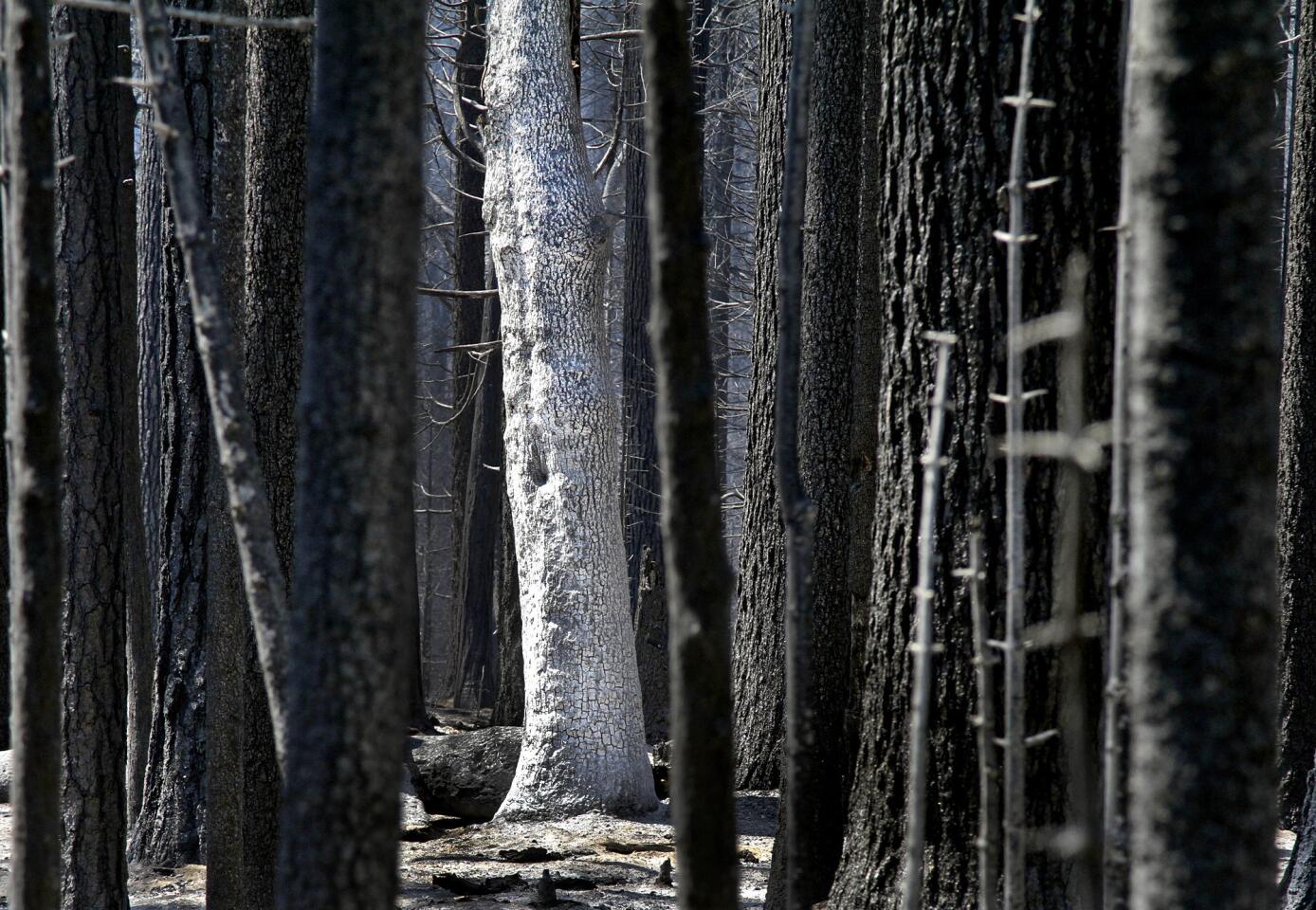
The burnt white bark of an oak tree stands out from the predominantly black charred bark of surrounding pine trees in the Stanislaus National Forest. (Lawrence K. Ho / Los Angeles Times)
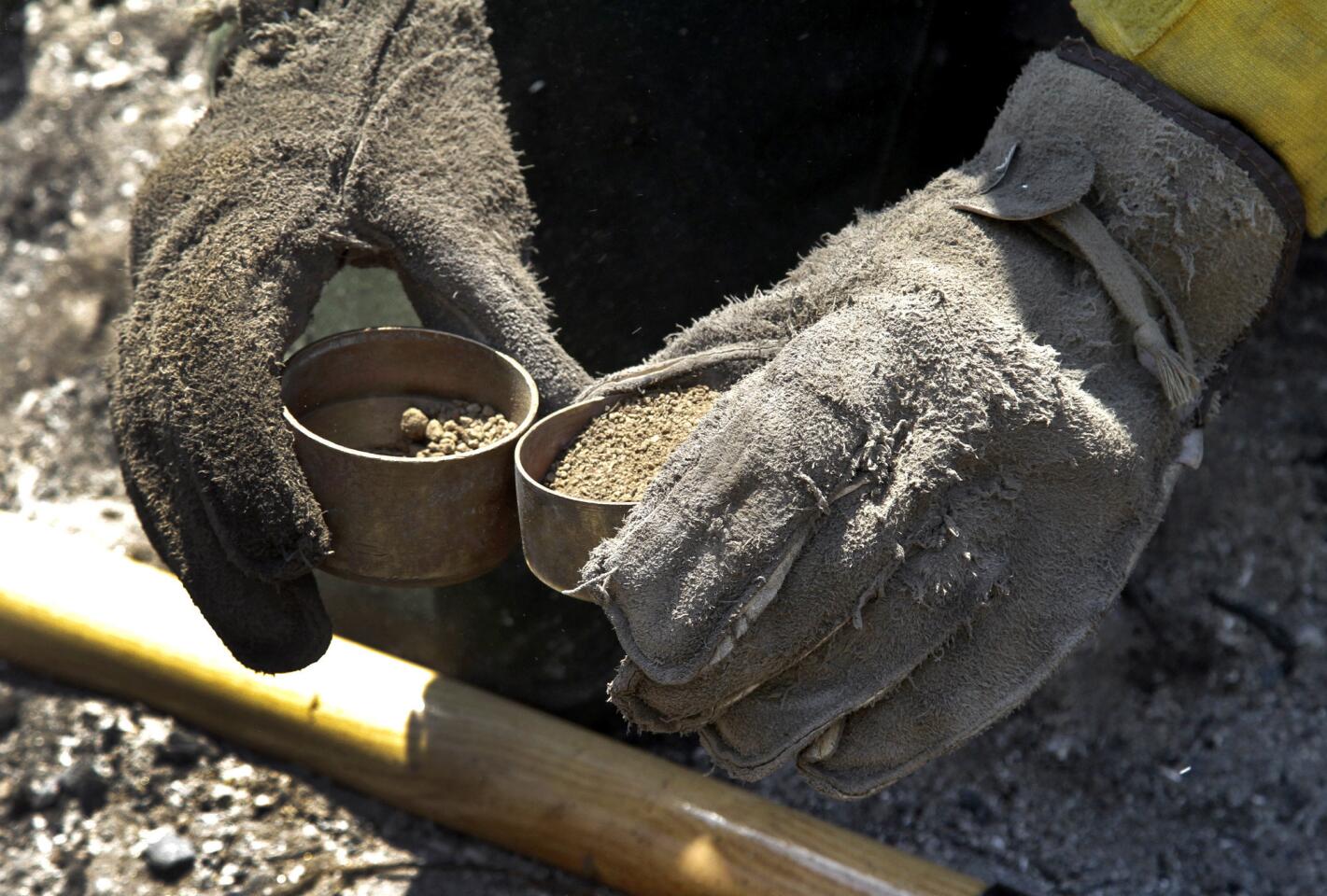
Samples collected in a portable sieve by scientist Curtis Kvamme determine the soil composition from a burned area in the Stanislaus National Forest. (Lawrence K. Ho / Los Angeles Times)
Advertisement
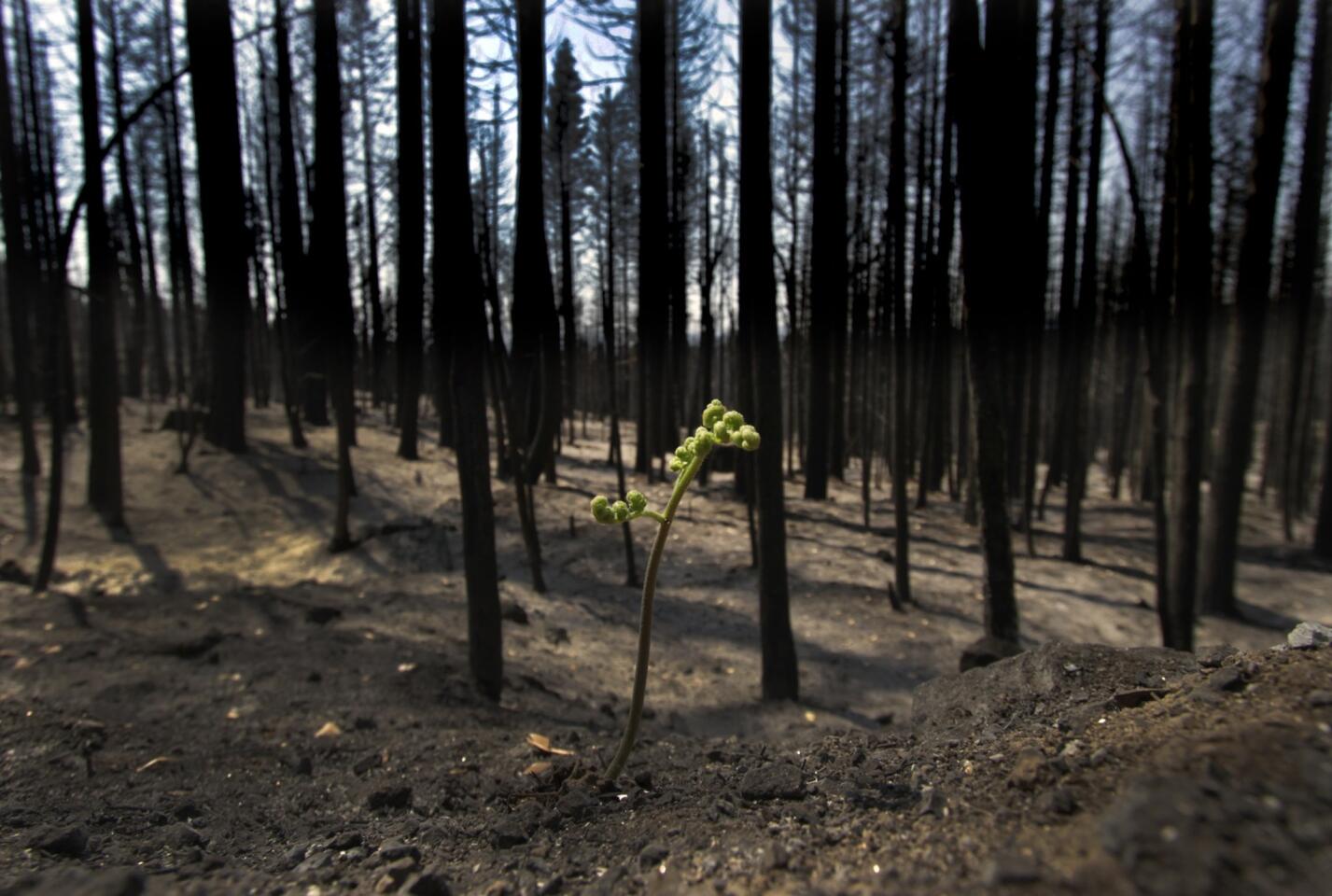
The new green shoot of a fern springs up from the charred ground in the burned area of the Stanislaus National Forest near Tuolumne, Calif. (Lawrence K. Ho / Los Angeles Times)
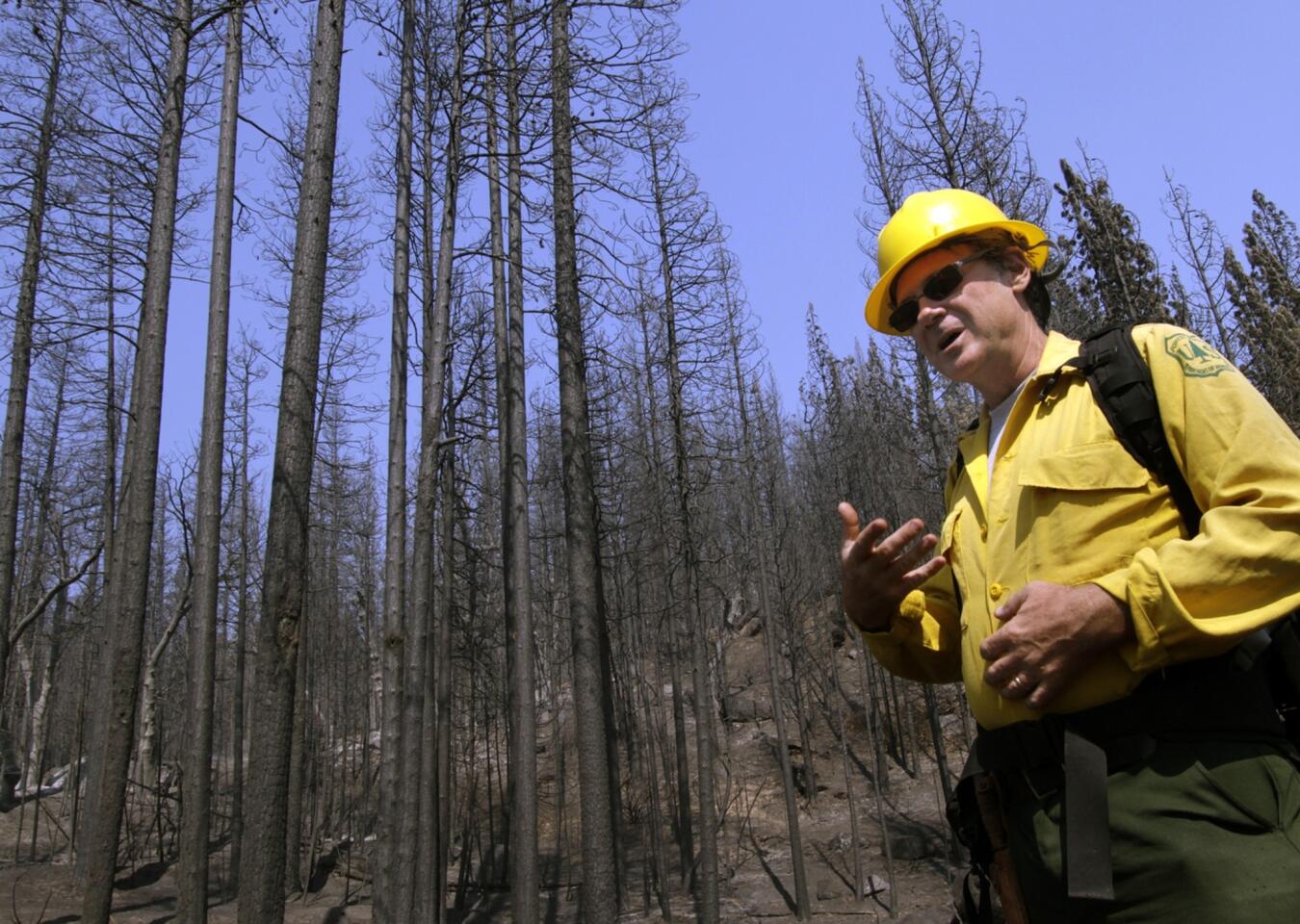
Todd J. Ellsworth is a U.S. Forest Service watershed manager who oversaw the post-fire survey known as Burned Area Emergency Response. His team collected data in the burn area near Yosemite to gauge environmental damage from the Rim fire. (Lawrence K. Ho / Los Angeles Times)
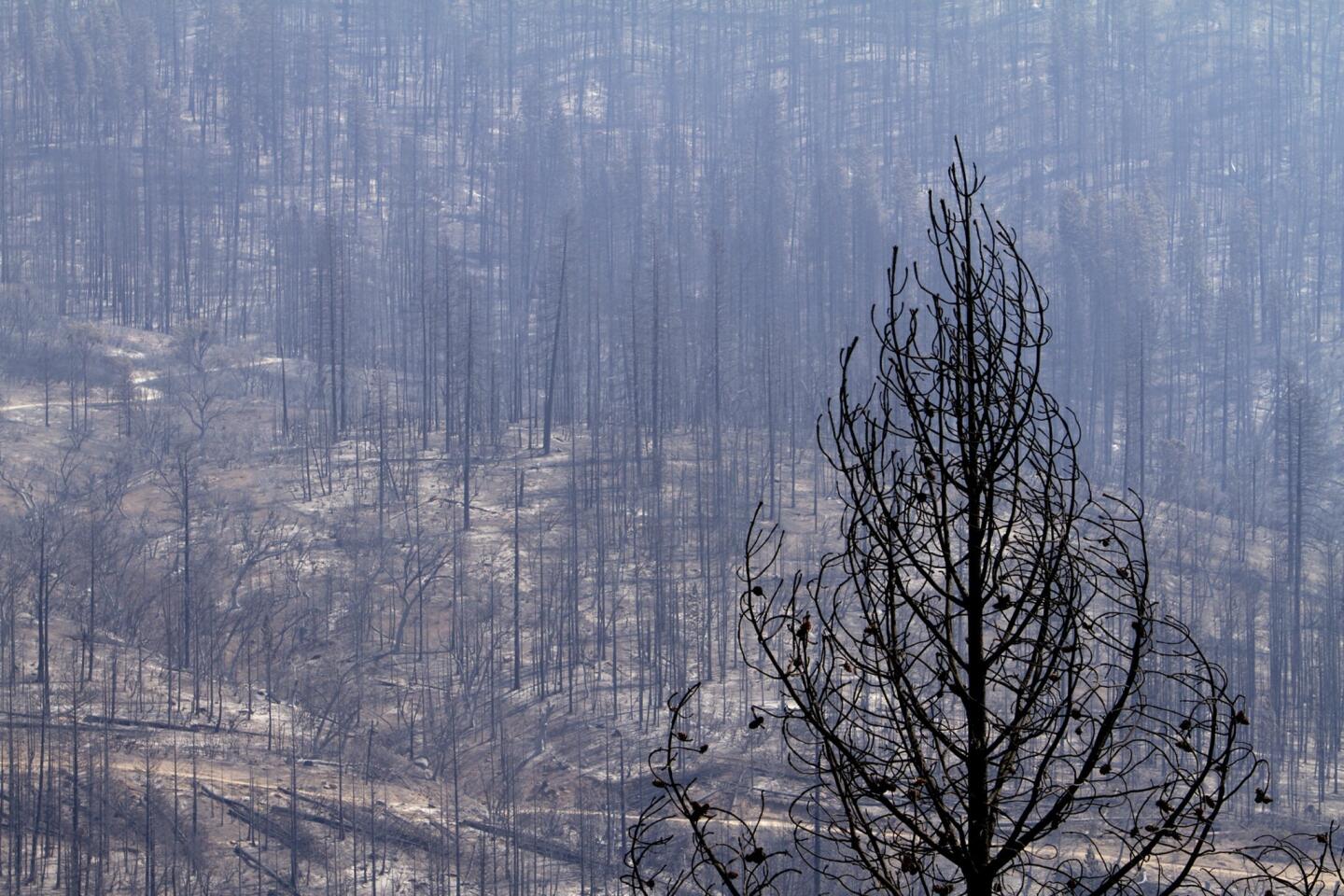
Burned trees make for a stark landscape in the Granite Creek drainage area of the Stanislaus National Forest. Where large patches of trees were killed, ecologists say it could take 30 to 50 years for the forest to reestablish itself. (Lawrence K. Ho / Los Angeles Times)
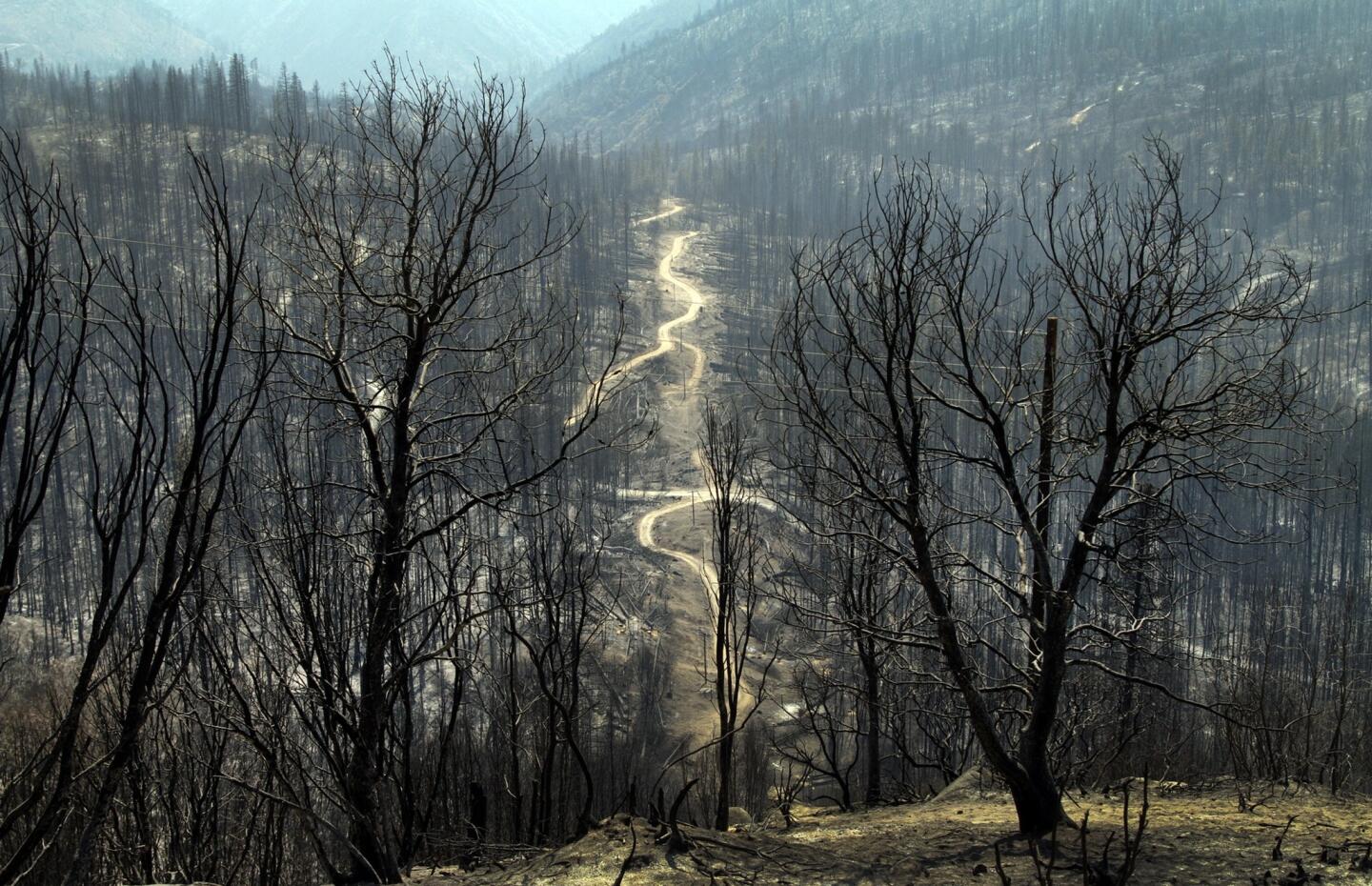
A wide view of the burned area from Cherry Lake Road in the Stanislaus National Forest near Tuolumne shows virtually no greenery. Remote sensing satellite images indicate that virtually all of the vegetation is dead on nearly 40% of the area of the 401-square-mile blaze. (Lawrence K. Ho / Los Angeles Times)
Advertisement
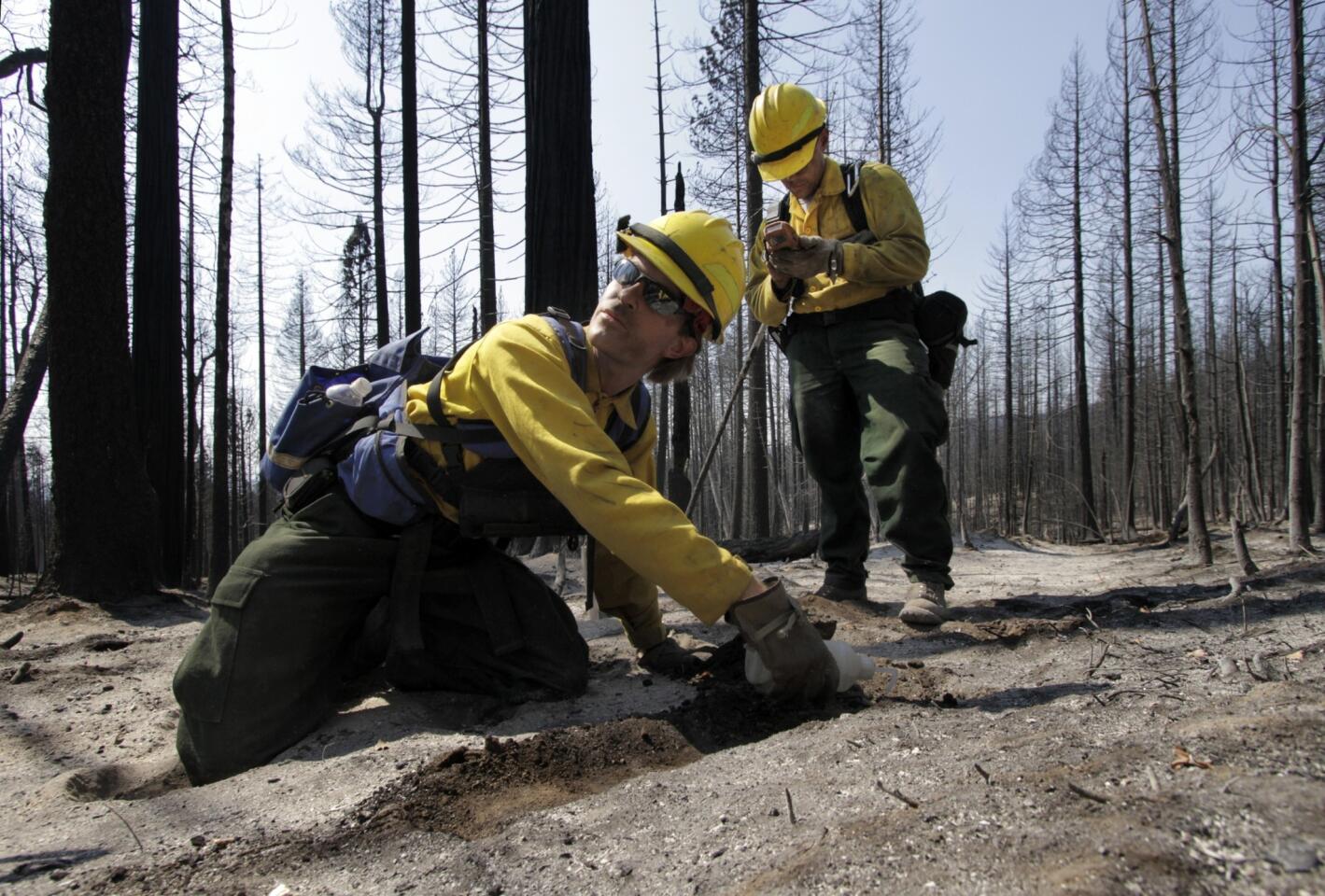
Soil scientists Curtis Kvamme, left, and Kellen Takenaka of the Forest Service gather data in the burned area of the Stanislaus National Forest near Tuolumne. A U.S. Forest Service team recently surveyed the area to gauge environmental damage from the Rim fire. (Lawrence K. Ho / Los Angeles Times)
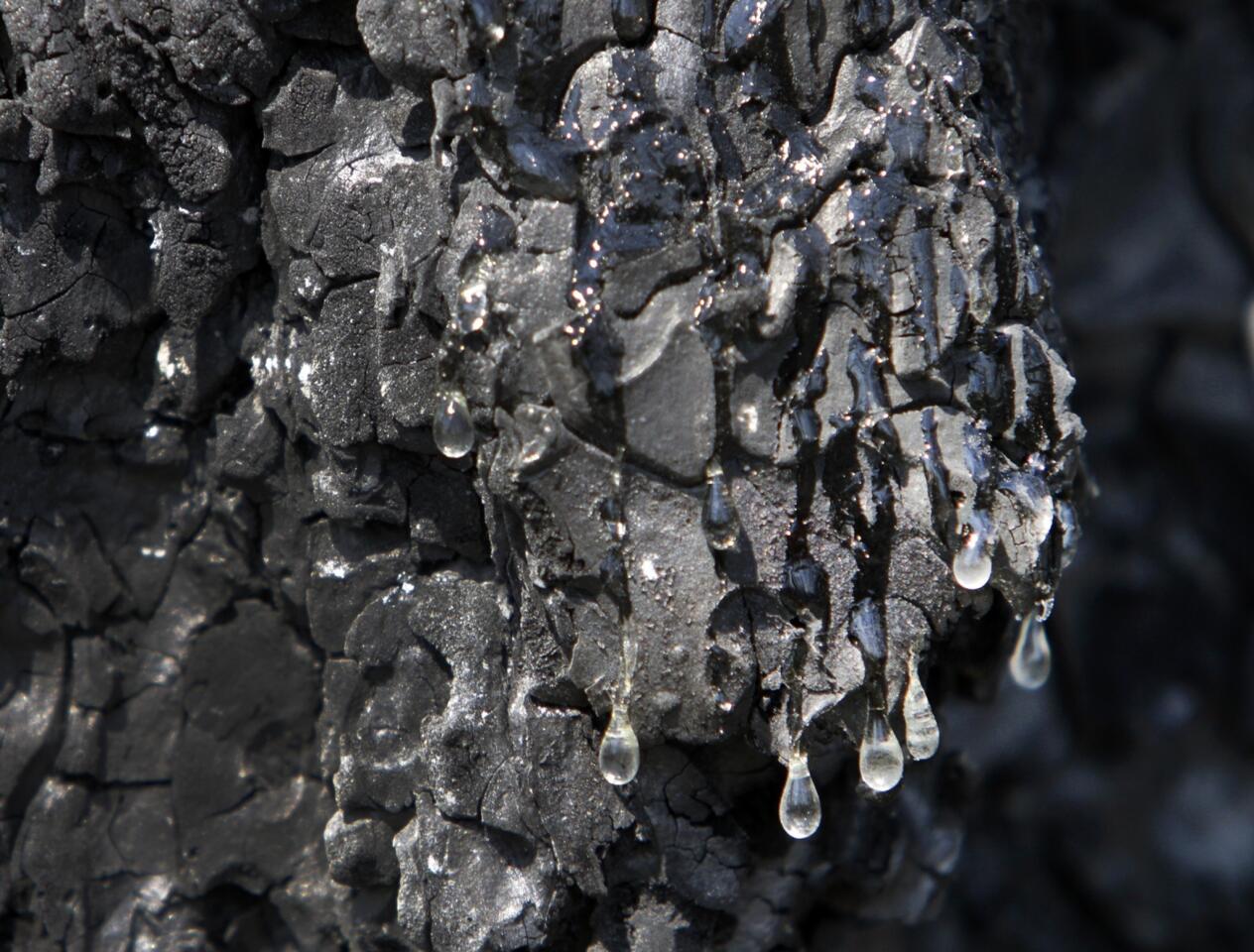
Sap drips through the burned bark of a ponderosa pine in the Rim fire burn area. ¿You¿re looking at a huge area that doesn¿t have any living conifers,¿ said Hugh Safford, regional ecologist for the U.S. Forest Service. (Lawrence K. Ho / Los Angeles Times)







